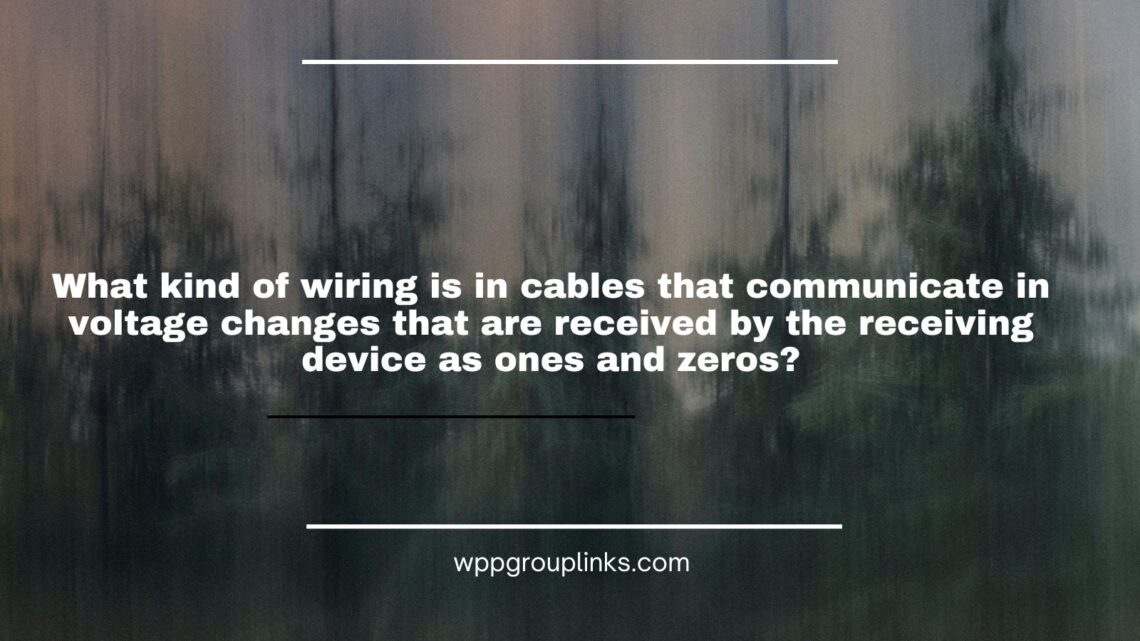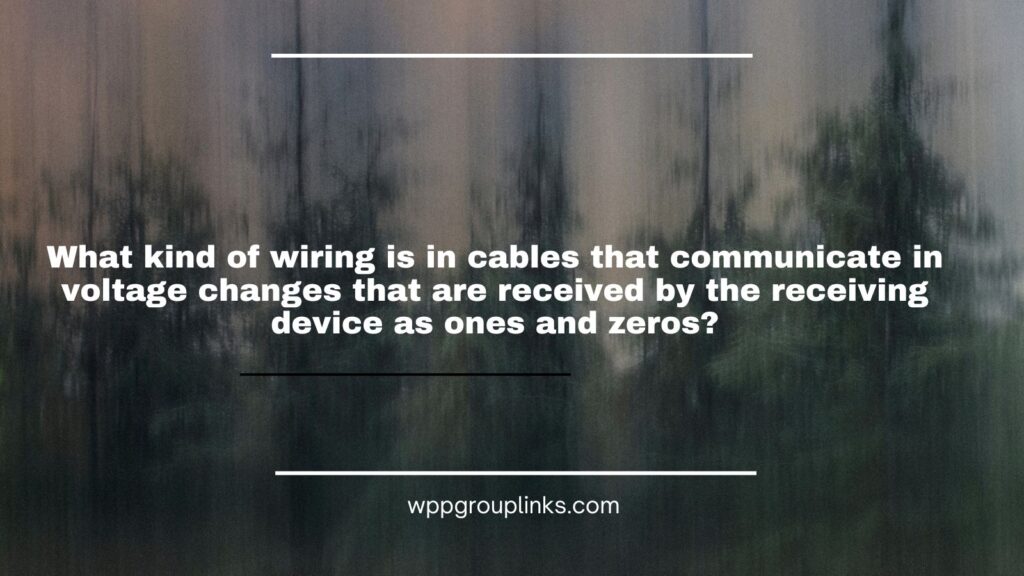Q: What kind of wiring is in cables that communicate in voltage changes that are received by the receiving device as ones and zeros?
or
Q: How are connections wired to exchange voltage changes that the receiving device interprets as ones and zeros?
- Gold
- Fiber
- Aluminum
- Copper
Explanation: It seems as if you are describing the wiring that is used in Ethernet connections, which send data via changes in voltage that represent binary digits (ones and zeros). Baseband signaling is the term used to describe this kind of communication.
Wiring in Ethernet cables is commonly of the “twisted pair” kind, which involves twisting together two separate pairs of insulated copper wires. Unshielded Twisted Pair, also known as UTP, and Shielded Twisted Pair, also known as STP, are the most prevalent varieties. The design of twisted pairs helps to limit electromagnetic interference caused by sources outside of the network.
In Ethernet, the voltage fluctuations on the cable are used to represent the binary data that is being transferred (either a 0 or a 1) Utilizing a technique known as Manchester encoding or variants such as 4B/5B encoding are two examples of these variations. This makes it possible to transmit digital signals across the wires, which in turn makes it easier for devices inside a network to communicate with one another and share data.






